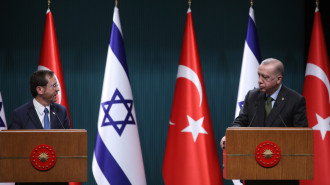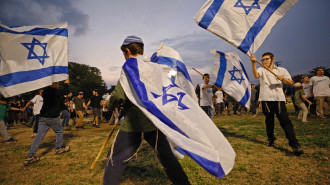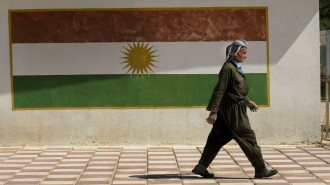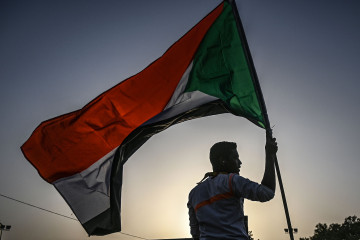

Cairo - In late September, nearly a year and a half after the outbreak of civil war in the country, the Sudanese Armed Forces (SAF) launched its biggest offensive to date on different strategic locations controlled by the Rapid Support Forces (RSF) in the Khartoum area.
The army’s surprise offensive is already redrawing the balance of forces in the tri-city and could end up turning into one of its most consequential operations since the conflict began.
The SAF launched its large-scale ground movements in the early hours of 26 September and has so far managed to seize control of three strategic bridges, advance positions in Khartoum and Bahri, and tighten the noose around a key oil refinery further north.
Army forces stationed in bases that had long been besieged by the RSF have simultaneously pushed to expand their positions to eventually link up with the advancing troops.
“The plan is to take over the capital so that it brings a political and moral boost to the army,” Jihad Mashamoun, a researcher and political analyst on Sudanese affairs, told The New Arab.
In its initial strike, the SAF captured two key bridges that until then had remained contested, connecting Omdurman to the Mogran district in northwest Khartoum, where the Blue and White Nile meet. It was the first time army troops had crossed into Khartoum from Omdurman.
In a second move, the SAF then took control of a third bridge linking Omdurman to Bahri, allowing its forces to link up with troops stationed at a military base that had been under siege.
“The SAF was able to connect its forces in the Karari base in Omdurman North with its forces in the Kadro camp in Northern Bahri, in the Al-Droshab [suburb] in Central Bahri, and in the Hattab camp in East Nile,” an army source said.
“This has opened up a window for further mobilisations and has linked up logistical lines extending in all strategic directions,” he added.
The third major advance has come further north and is aimed at the Jaili oil refinery, occupied by RSF forces but now surrounded by army troops to the north, south, and east as the Nile closes them off to the west. Capturing the facility would greatly bolster the SAF’s position in the capital.
“This is the first time since the war’s outbreak that [RSF] forces have been surrounded in the refinery and that the siege has been tightened in a pressing way,” the source in the army said.
|
|
The last major SAF offensive in the capital area took place in January and was concentrated on taking control of most of Omdurman. Troops stationed in some of the army’s military areas in Khartoum and Bahri also pressed forward to try to gain metres around them.
Since the onset of the war in April 2023, the RSF controlled almost all of Khartoum, while the SAF was only able to hold on to a few strategic positions, including the headquarters of the General Command in central Khartoum and the Armoured Corps camp in the south.
For months, the conflict in the capital area remained largely static, with the two sides well entrenched in relatively easy-to-defend positions such as tall buildings and bridges.
Amid this stalemate, artillery attacks, mostly by the RSF and aimed at gradually disrupting the security situation in areas controlled by their rivals, became more prevalent, according to data from the non-profit Armed Conflict Location and Event Data (ACLED).
“The most important field gain [of the SAF offensive] has been securing a wide geographical area in Bahri, through which the central and northern areas of Omdurman have been removed from the range of the [RSF] medium and light artillery fire,” the army source said.
Both the SAF and RSF have also been acquiring and deploying more combat drones as the war progressed. ACLED data shows that since the start of the conflict the army has conducted over 280 drone strikes, almost all in Khartoum state and mostly to support ground offensives.
The RSF has conducted at least 10, largely against SAF troops farther away from the front lines.
After their initial push, SAF advances in recent days have been rather slow and the fiercest fighting is now concentrated in the Mogran district towards the headquarters of the General Command, around the Armoured Corps further south, and steadily closer to the Jaili refinery.
“The SAF got the equipment, the soldiers and they are advancing; but they are cutting off the [RSF] supply lines before making advances towards key strategic areas,” Mashamoun said.
“[The army] moves slowly, then concentrates on defending what they have, and then they move a little bit further again,” he added.
Sudan’s army commander and leader, Abdel Fattah Al Burhan, has recently visited some of the areas recaptured by the SAF in its ongoing offensive, including the Kadro military area, to oversee the operation and boost the morale of his troops and local residents.
Other fronts in Sudan's war
Besides the advantage that the SAF may have gained from the acquisition of new weapons and military equipment supplied by regional allies in recent months, one of the main reasons for the army’s recent advances in the capital area is the excessive stretching of lines and forces by the RSF, now deployed from Darfur to central Sudan.
The SAF operation in Khartoum is part of a larger offensive launched in several areas at the same time. One of the main fronts remains the battle for El Fasher, the capital of North Darfur and one of only five state capitals in the region not controlled by the RSF.
There, the RSF has been pounding civilian neighbourhoods with artillery in recent weeks and has been slowly gaining ground on the SAF and the Joint Force of former rebel armed groups.
As of mid-September, the RSF overran at least one of the three defensive lines of the Joint Force and the SAF in El Fasher, according to Yale’s Humanitarian Research Lab (HRL).
In late September, Sudan Witness also geo-located images of RSF fighters west of the SAF’s advanced eastern defensive positions in El Fasher. It was the first time the collective observed significant changes to the defensive lines in the city since June.
Despite the RSF push, in recent days SAF forces and especially the Joint Force, which is proving to be more adept at confronting the paramilitary group, claim to be gaining ground.
|
|
“[The SAF] has delegated to the Joint Force of the armed movements [the task of] dealing with the Rapid Support Forces in Darfur,” Mashamoun noted.
“The army focuses on Khartoum and the central states of Sudan, and the Joint Forces now focus on protecting El Fasher, expanding when needed,” he added.
The changing momentum in North Darfur is mainly attributed to the arrival of new troops and attacks on the RSF’s rear positions, mainly aimed at cutting off their supply lines.
“Since the beginning of this war, the Joint Force of the armed movements has used a defence strategy,” the group’s spokesman Ahmed Hussein Mustafa said. “Now we have started the attack plan instead, and our forces are present and advancing on all fronts,” he added.
“In North Darfur, we inflicted defeats on the [RSF] that we consider important in the areas of Mado and Bir Mazza,” Mustafa noted.
The next months are again expected to be decisive for the future of El Fasher and the rest of Darfur, as it was also at the end of last year when the RSF seized control of the other capitals in the region: Nyala (South Darfur), El Geneina (West Darfur), and Zalingei (Central Darfur).
Beyond Khartoum and El Fasher, the army is trying to go on the offensive in other parts of the country such as in Gezira state, where it has built up forces with its sights set on regaining control of its capital, Wad Madani, which the RSF occupied last December.
The army is also pushing to seize Jabal Moya, a key location in Sennar state, which was taken by the RSF in June. And the Joint Forces have in turn regained a foothold in West Darfur.
“In West Darfur, the Joint Force was able to inflict successive defeats on the RSF in the areas of Jebel Awum, Kulbus, and Sirba, and our forces are advancing steadily,” Mustafa said.
Multiple crises in Sudan
The intensification of the war in Sudan is expected to further exacerbate the dire humanitarian crisis in the country, which is enduring the world’s largest hunger crisis amid a deliberate blockade of aid by the warring parties and where nearly 11 million people remain displaced.
The rainy and flood season has also hit particularly hard this year in Sudan and the country’s collapsed health system is also struggling to cope with outbreaks of diseases such as cholera.
In recent days, as the SAF expands its bombing campaign as part of its multi-front offensive, there has also been a spike in civilian casualties caused by indiscriminate shelling in civilian areas. The state of terror imposed by the RSF in the areas it occupies has also not ceased.
Mashamoun argues that the army today is in a different position than it was at the beginning of the war. “The army was basically not ready for this conflict,” he noted.
“When the war started, the army was always on the defensive, because they wanted to keep their resources and strategic bases under control, and when they realised that the resources were exhausted or that they could not match the RSF, they withdrew,” he added.
The tide now seems to be slowly turning on some fronts. But how far the army’s momentum can be maintained, and whether it can be sustained during the dry season, remains to be seen.
“Before the rainy season ends and the RSF can move fast, I think that the SAF is going to maximise its advantage by moving as many troops as possible, cutting off supply lines, making a lot of gains, and [then] making a defensive position,” Mashamoun anticipated.
Join the conversation: @The_NewArab
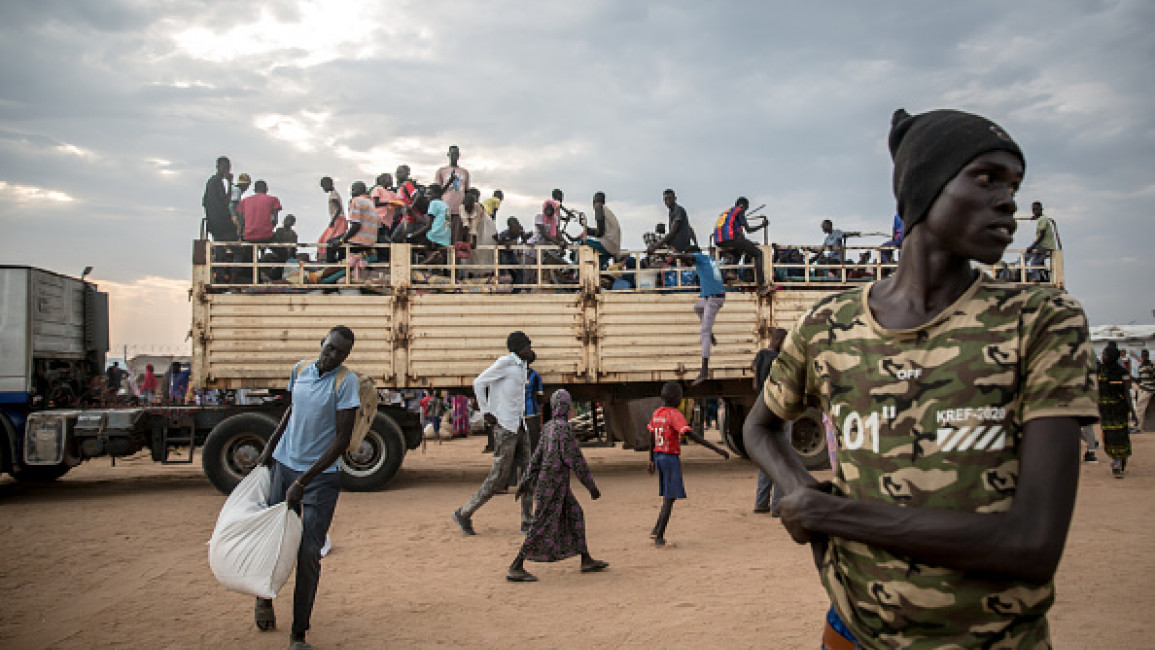
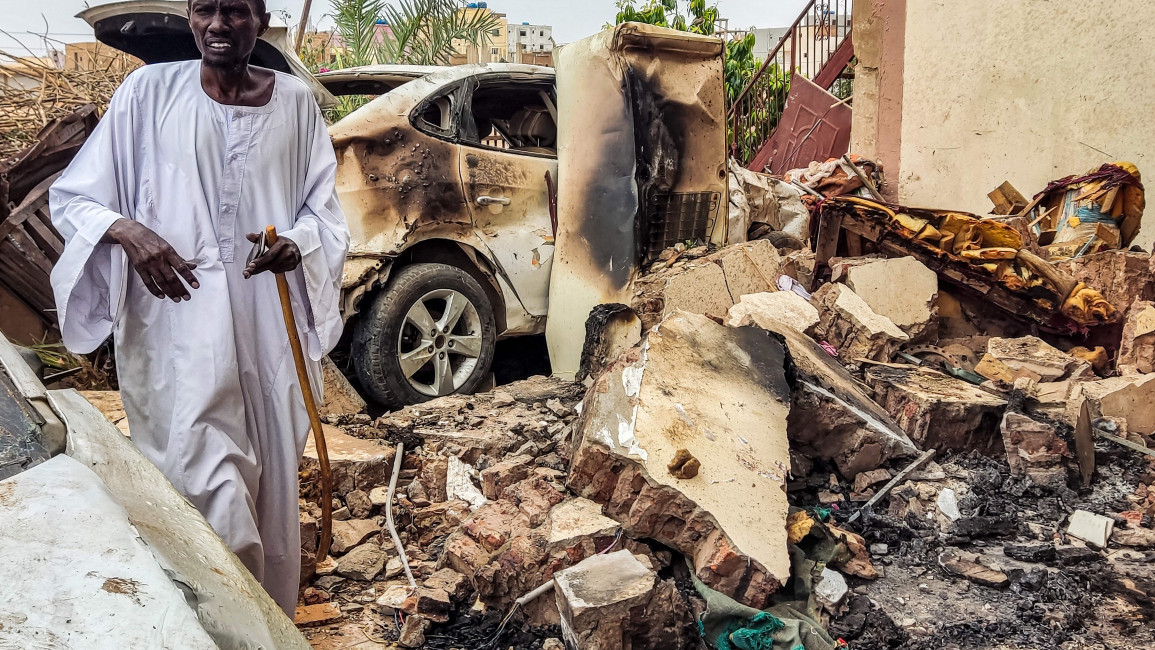



 Follow the Middle East's top stories in English at The New Arab on Google News
Follow the Middle East's top stories in English at The New Arab on Google News
